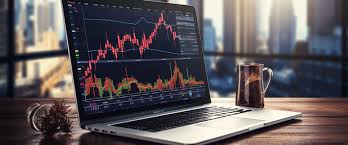
The Future of Automated Trading in Forex: A Complete Guide
Automated trading in Forex has revolutionized the way traders engage with the currency markets. By leveraging advanced algorithms and complex trading strategies, automated systems are designed to make decisions quicker than even the most seasoned trader. In this article, we will explore the ins and outs of automated Forex trading, its benefits, potential pitfalls, and how to effectively integrate these systems into your trading routine. Whether you are a novice or an experienced trader, understanding the fundamentals of automated trading can provide you with significant advantages in today’s fast-paced market. To further enhance your trading journey, consider utilizing resources such as automated trading forex Online Trading CM.
What is Automated Forex Trading?
Automated trading, also known as algorithmic trading or Robo-trading, employs computer programs to execute trades on behalf of a trader. These programs use predefined criteria—from technical indicators to price movements—to identify potential trading opportunities. The primary goal of automated trading systems is to take emotions out of trading, ensuring that decisions are based purely on data and predefined rules. This method allows for high-frequency trading, where numerous trades can be executed in a very short time, capitalizing on small price movements.
Benefits of Automated Forex Trading
There are several advantages to using automated trading systems that can enhance trading outcomes:

- Speed: Automated systems can monitor the markets and execute orders much faster than a human could.
- Emotionless Trading: By following a strict set of rules, automated trading eliminates emotional decisions that can lead to losses.
- Backtesting Capability: Traders can assess their trading strategies against historical data to determine their effectiveness before risking real money.
- 24/7 Market Monitoring: Automated systems can track markets around the clock, identifying opportunities even when the trader is unavailable.
- Consistent Execution: Automated trading maintains discipline by sticking to the trading plan without deviation.
Getting Started with Automated Forex Trading
All traders, irrespective of experience level, can venture into automated trading. Here’s a step-by-step guide on how to start:
- Select a Trading Platform: Choose a broker that supports automated trading and has a good reputation, such as Online Trading CM.
- Decide on a Trading Strategy: It’s crucial to know what kind of strategy you will employ. This could range from scalping to long-term trading.
- Develop or Choose an Algorithm: You can either develop your own trading algorithm or utilize an existing one. There are numerous platforms available that provide pre-built algorithms.
- Test Your Strategy: Once you have your trading algorithm ready, backtest it to see how it performs against historical data. Make necessary adjustments based on the outcomes.
- Start with a Demo Account: Before going live, test your automated trading system with a demo account. This allows you to identify any potential issues and adjust settings as needed.
- Go Live: Once you are comfortable with your system’s performance on the demo account, you can transition to live trading. Monitor your trades closely, especially initially.
Potential Pitfalls of Automated Trading
Though automated trading offers significant advantages, it is not without its risks. Here are some common pitfalls to be mindful of:

- Over-Optimization: This occurs when a system is excessively optimized for historical data, leading to poor performance in live markets.
- Technical Failures: Issues like system outages, connectivity problems, or software bugs can lead to significant losses.
- Market Changes: Automated systems may falter in rapidly changing market conditions, especially if they are based on historical data that no longer applies.
- Lack of Flexibility: While automated systems follow strict rules, unexpected market incidents may require a more flexible approach that algorithms may not accommodate.
Best Practices for Successful Automated Trading
To ensure that your foray into automated trading is successful, consider the following best practices:
- Use Stop-Loss Orders: Always implement stop-loss orders to limit potential losses from unexpected market movements.
- Regular Monitoring: Continually review and adjust your trading algorithm to ensure relevance with current market trends.
- Diversify Your Portfolio: Avoid putting all your capital into one automated strategy. Diversification can mitigate risk.
- Stay Educated: Keep yourself updated on Forex market developments, technology advances, and algorithmic trading trends.
Conclusion
Automated trading in Forex offers traders an unparalleled opportunity to enhance their trading efficiency and decision-making capabilities. By understanding how these systems work and implementing best practices, you can harness their power to achieve your trading goals. Like any tool, success depends on its application; therefore, take the time to educate yourself, test your strategies, and monitor your performance. As you navigate this exciting landscape, consider platforms that provide excellent resources and functionalities like Online Trading CM to bolster your trading journey.
